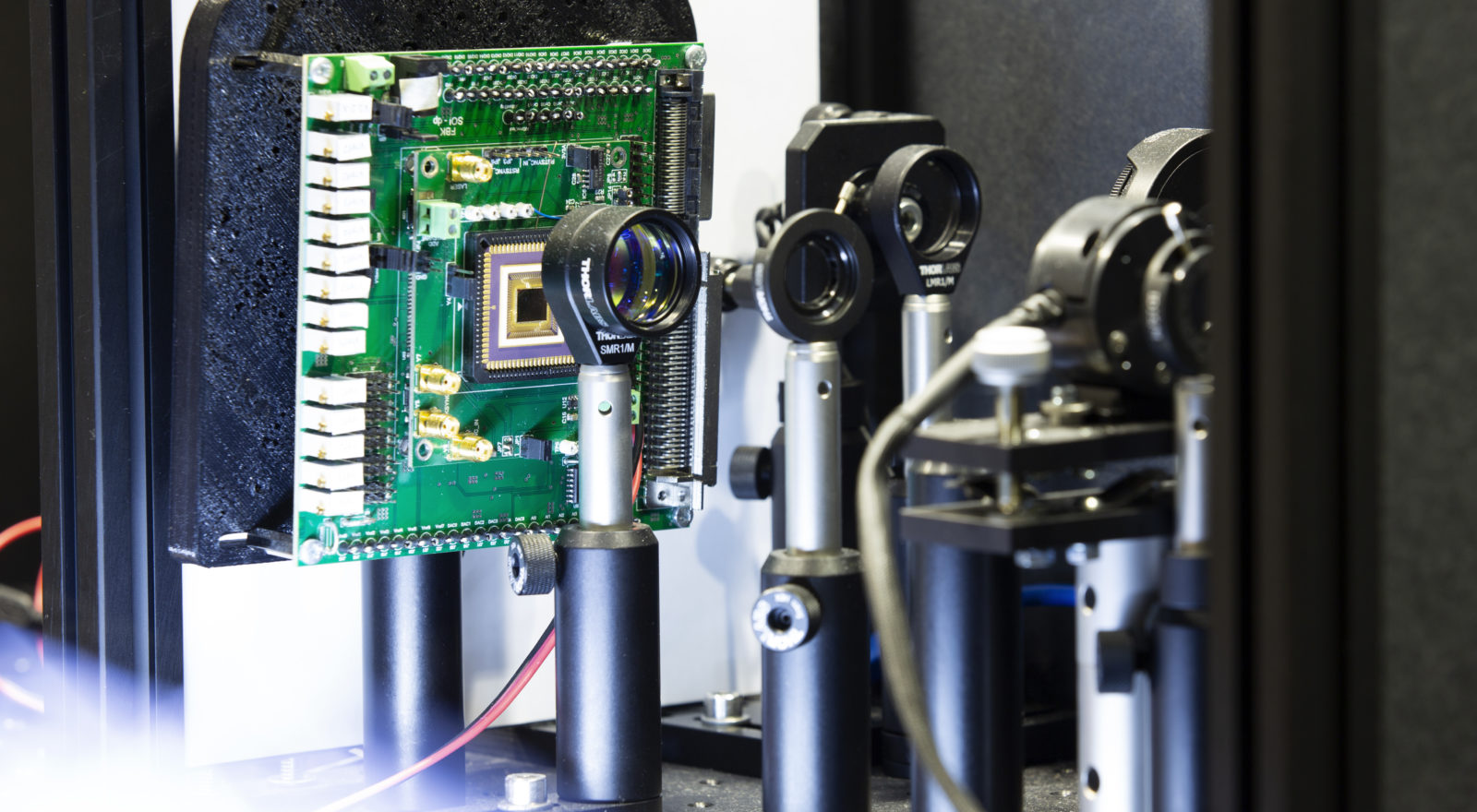Ghost footprints on the light to keep an eye on health and the environment
High-precision, low-cost systems for air quality and medical diagnostics are being built at the Q@TN laboratory. The Trento based quantum physics center is an organization of reference in Europe for the design and manufacture of cutting-edge prototypes. By developing integrated photonic chips, the road to the breakthrough allowed by the use of ghost imaging and undetected photon spectroscopy techniques is being paved thus moving from theory to practice, from the laboratory to everyday life.
Trento, September 21, 2021 – (e.b.) Protagonists since ancient times in tales and legends, after having hovered in castles, books and films, ghosts now move in photonic chips. Their presence is not manifested by the tinkling of chains, but by footprints in the light. Experts talk about ghost imaging and undetected photon spectroscopy, special quantum optics techniques that allow us to understand what happens in a particle of light based on the “footprint” it leaves on a particle.
Host imaging and undetected photon spectroscopy are not new: there are already numerous studies and experiments involving research groups from various parts of the world. Now, however, at the Q@TN in Trento we are working to move from theory to practice, from the laboratory to daily life and to use this technique to build high-precision, low-cost and small-sized instruments for environmental applications (for example for air quality control) as well as medical applications (such as in-vivo analysis of biological tissues for diagnostic microscopy, for example for the detection of cancer cells).
The Q@TN quantum physics center in Trento, directed by Lorenzo Pavesi, a professor of Physics at the University of Trento, is a state-of-the-art incubator. The young and dynamic training, research and innovation laboratory focusing on quantum sciences and technologies sees the University of Trento, Fondazione Bruno Kessler, the National Research Council and the National Institute of Nuclear Physics (Infn) work togeher.
Established in 2018, over the years it has become a national and European reference point and a unique organization where to design quantum devices and create algorithms and prototypes for supercomputing, secure communications and sensors. During its first years of activity, Q@TN has received 4.5 million in funding for research projects, has filed five patents, has produced over 55 scientific publications and has 24 students in the transdisciplinary doctoral program in Quantum Sciences and Technologies:
One of the frontiers on which the center is committed concerns the use of the ghost imaging and the undetected photons techniques. Both techniques face the same problem: shifting the information measured by a photon at wavelengths that are difficult to detect, such as the mid-infrared, to others that are easily accessible, such as the visible range. The two techniques are similar but at the same time essentially different.
Ghost imaging uses the quantum correlation between two photons to transfer the information collected from one photon to another. In this way, the ease and efficiency of measurement can be increased. It exploits the bounce of information from the photon interacting with the object to the other photon which is carefully analyzed. However, it is still necessary to measure both photons;
with undetected photon spectroscopy, instead, it is not even necessary to measure the photon that interacts with the object and that traditionally carries the information with it. To explain what this technique consists of, the example of a close-knit couple is sometimes used: from one partner you can tell the mood of the other without even having to look at it, because the worries and satisfactions of one leave inevitably an imprint on the other member of the couple. Something similar happens in the quantum world. Thanks to the quantum correlation between the two photons, the modifications of one are reflected in the state of the other. It is therefore possible to use the easy-to-read correlated photon to obtain information on the partner photon that is difficult to access. In other words, it becomes possible to see a particle of light without looking at it.
Leonardo Gasparini, a researcher at Fondazione Bruno Kessler working with the Q@N laboratory team, explains how ghost imaging is no longer science fiction. «In recent years, we have worked on the SuperTwin project, funded by the European Union, which has led to a first prototype of an innovative optical microscope that uses correlated photons to break the resolution barrier imposed by the laws of classical physics. By exploiting this technique, in the future it will be possible to observe particles of a few hundred nanometers like viruses, » he explained. «Building on this experience, we are now working on a new European project, which uses the ghost imaging technique to create an optical microscope capable of ‘seeing’ the ‘invisible’ characteristics of a sample».
Stefano Signorini, a research fellow at the University of Trento, focuses on the ability achieved by Q@TN in generating and using pairs of correlated photons in a silicon integrated circuit: “Here in Trento we are developing a quantum chip that accurately detects the quantity of a gas, such as carbon dioxide in the environment, using undetected photon spectroscopy. We generate pairs of photons, where one photon is in the mid-infrared range, which is very sensitive to gas, and the other in the visible range, which is easy to measure. The photon interacting with the gas, which is difficult to detect with current technologies, is not even measured. We can tell the concentration of the gas from the correlated visible light particle, which is easy to measure with a conventional light detector. All this, on a miniaturized and low cost chip».
photo ©UniTrento, ph. Federico Nardelli
UniTN/FBK/INFN/CNR Press release
